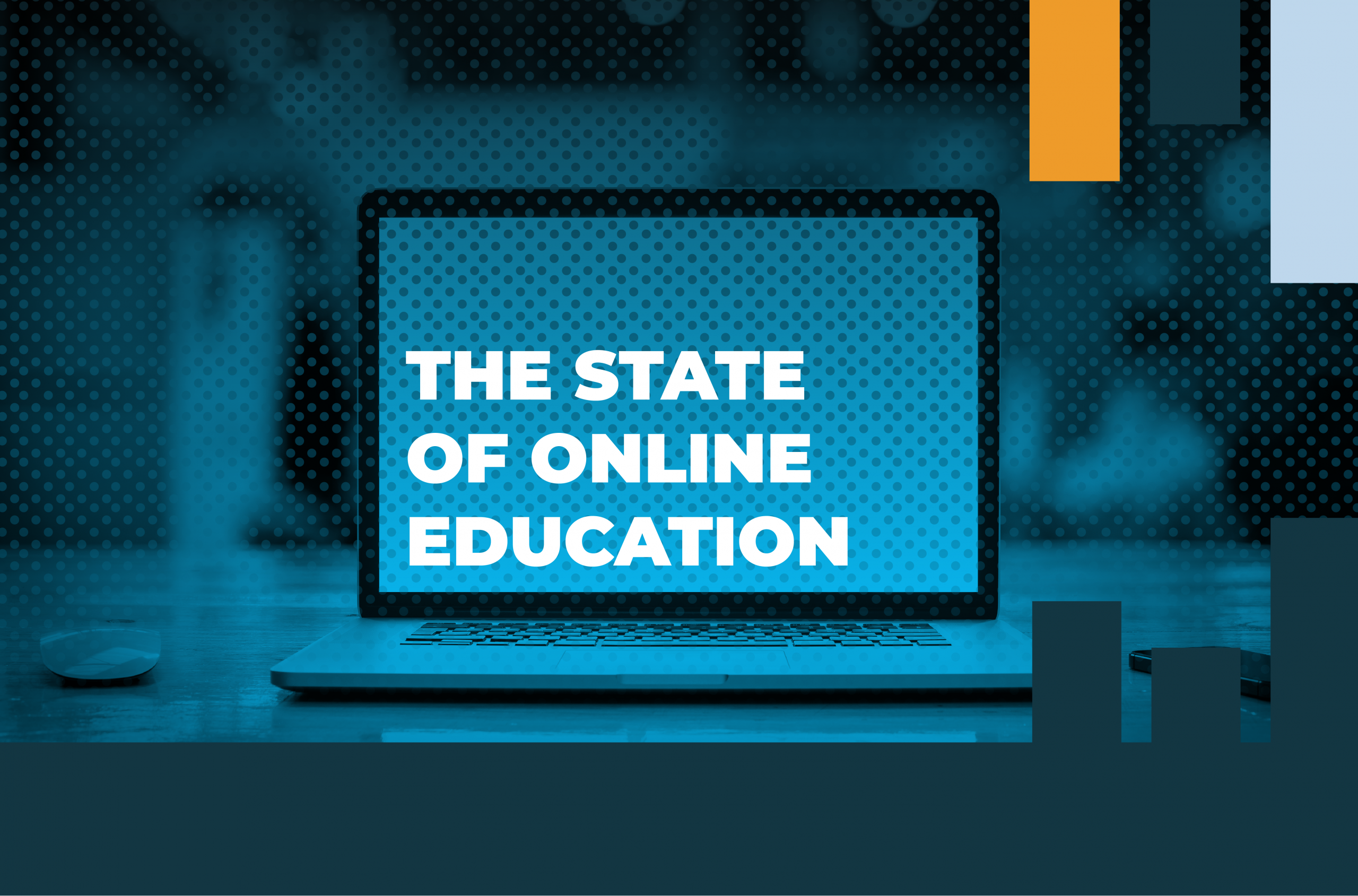Prologue: The Online Education Explosion
Online college enrollment in bachelor’s and master’s degrees increased by 42.59 percent from 2012 to 2017. That’s almost one million more online students over the course of six years. Compare this to total college enrollment, including online and on-campus master’s and bachelor’s degrees: Total enrollment in these award levels has increased by only 0.74 percent in the same time.
College enrollment was hit hard by the 2008 recession. According to the National Center for Education Statistics, college enrollment between 2010 and 2016 decreased by 7 percent. NCES didn’t start distinguishing online enrollment from on-campus enrollment until 2012, but online enrollment has seen an increase every year.
[caption id="attachment_50042" align="aligncenter" width="1256"]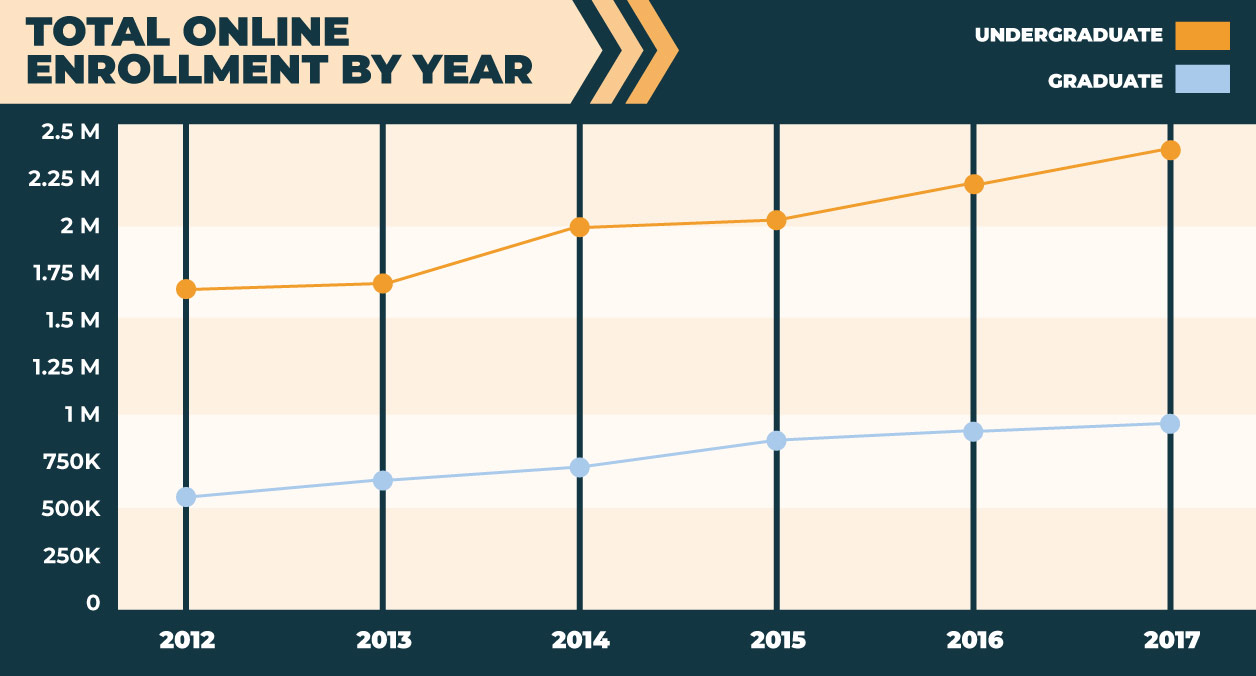 Fig. 1: Total online enrollment from 2012-2017.[/caption]
Fig. 1: Total online enrollment from 2012-2017.[/caption]
As college tuition becomes increasingly pricey and national student debt skyrockets, online education has proven to be a popular alternative for students who need a more practical, efficient, and affordable option than on-campus degrees.
If there was ever a scandal that epitomizes the exclusivity of higher education, it was the college admissions bribery scandal. Online education is often touted as the antidote for these kinds of economic barriers in education; the internet is an accessible and flexible format for working adults to earn a quality education at a low cost. According to U.S. News and World Report, the average online bachelor’s degree student is over 30 years old and employed while in school.
Yet online education is prone to scandals of its own. The shuttering of Corinthian Colleges, for example, left thousands of students with incomplete degrees, mountains of debt, and not even a transcript to show for it. With such an explosive increase in online students, online education needs to be held accountable too.
This report will show you trends in online enrollment, which schools and majors have harnessed the power of online education the most effectively, and why online education has gotten so popular.
To get an overview of the state of online education in 2020, we talked to university professors, students and employers. We examined the most recent data from the National Center for Education Statistics and the Department of Education’s College Scorecard. By the end of this report, I hope you’ll know whether online education is a viable method of teaching, a good investment, and a good fit for you. Ultimately, you’ll see what the future of online education will look like.
This report is based on the most recent data from the NCES. For most datasets, this is the 2016-2017 academic year. Completions data are from the 2017-2018 academic year. Look below each reference for the exact source.
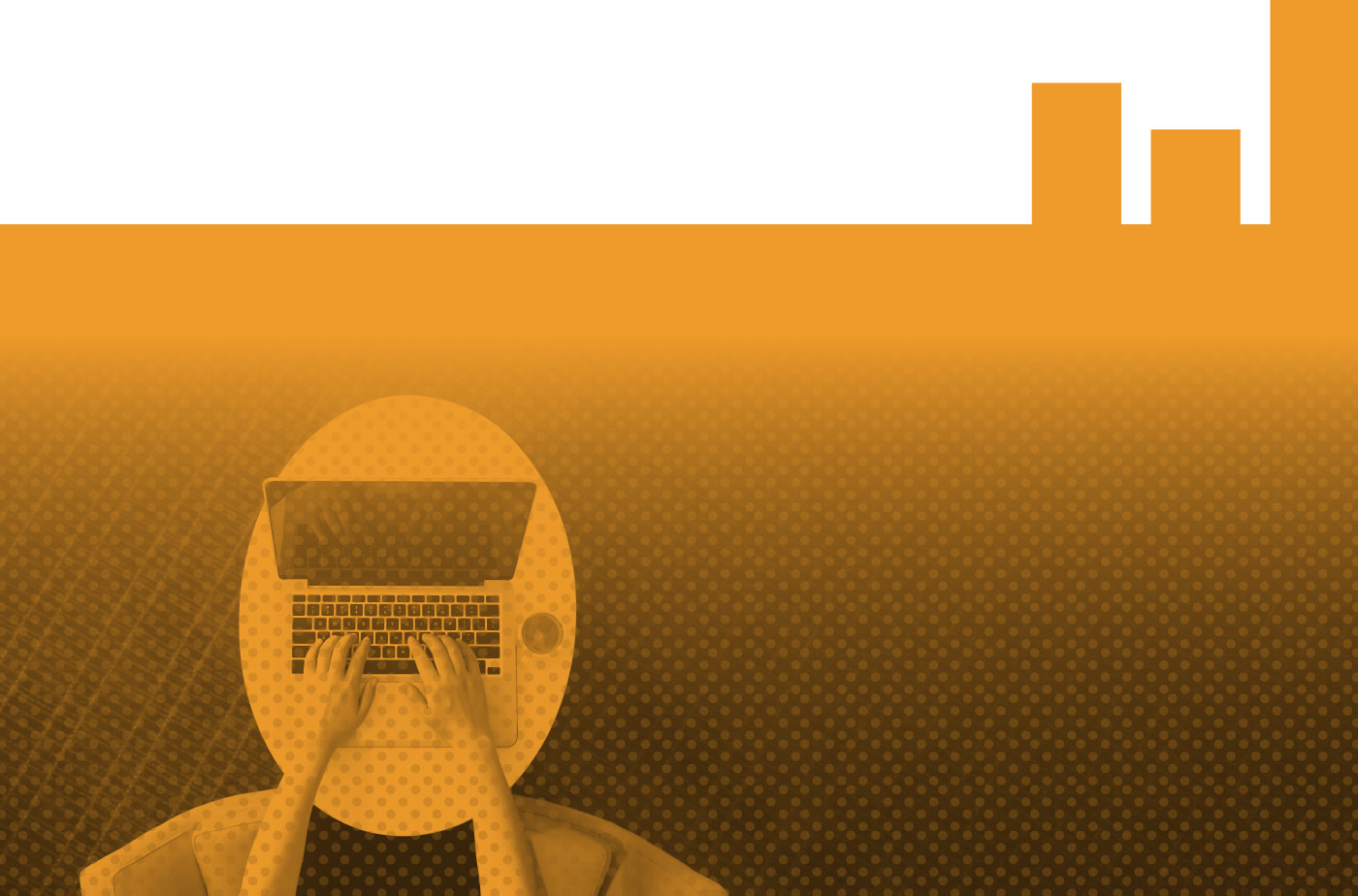
Part 1: The Growth of Online Education

Campuses Take a Dive, Online Colleges Soar
Online education is evolving rapidly. Technologies such as 3D printers, artificial intelligence, cloud systems, virtual reality, augmented reality, automation, learning management systems, internet-of-things, data analytics, and robotics are transforming both the future of work and the future of education. As we enter the “fourth industrial revolution,” higher education institutions are challenged to adapt to the increasing demand for relevant and quality education that will equip students with the appropriate skills for the changing workforce.
In general, all colleges are experiencing an on-campus enrollment downturn. Higher education institutions are facing pressures such as shrinking enrollment pools, record low state funding, fewer international students, and a general wavering belief in the usefulness of a college degree. There is a skills mismatch between supply and demand in the workforce, exacerbated by automation and digital outsourcing; there are seven million job openings and over 6.3 million job seekers in the country. Competing for state funding, rising tuition rates, and students’ and employers’ needs are contributing factors that are influencing higher education institutions to provide more innovative online solutions and valuable student learning experiences.
Adapt to Overcome
Schools are adopting online education as a means to combat these challenges. Online education is attracting growing numbers due to its accessibility, inclusivity, affordability, flexibility, convenience, student-driven learning, and relevance. An online education provides the opportunity for diverse populations to receive a first class education from esteemed institutions on a global scale. Over the last 15 years, online enrollment has quadrupled and about 1/3 of college students have taken an online class. According to an Insider Higher Ed 2018 study, “the proportion of all students who were enrolled exclusively online grew to 15.4 percent (up from 14.7 percent in 2016), or about one in six students.” The Journal of Global Information Technology Management reports that “the proportion of students enrolled in at least one online course has risen to over 30 percent.”
It is becoming a common trend for the general public around the world to take at least one online course. It is an exciting time for traditional, nonprofit, public, and private universities to expand their online offerings and support the growing numbers of online learners.
As an overview of the online school landscape, Online Schools Report has found that, notably, Southern New Hampshire University, Grand Canyon University, University of Maryland-University College, and South University, Savannah Online have experienced significant online enrollment changes. This data comes from NCES Fall Enrollment numbers from 2012 to 2017.
- Southern New Hampshire University had the largest increase in undergrad enrollment, at 57,970, and the third largest graduate enrollment increase, at 14,846.
- Grand Canyon University had the largest increase in graduate enrollment, at 19,186 and the sixth biggest undergrad enrollment increase, at 16,777.
- The University of Maryland-University College increased online undergrad enrollment by 10,649, but online graduate enrollment decreased by 596.
- South University, Savannah Online’s online enrollment had a 2,625 graduate increase and 7,402 undergrad decrease.
[caption id="attachment_50043" align="aligncenter" width="1256"]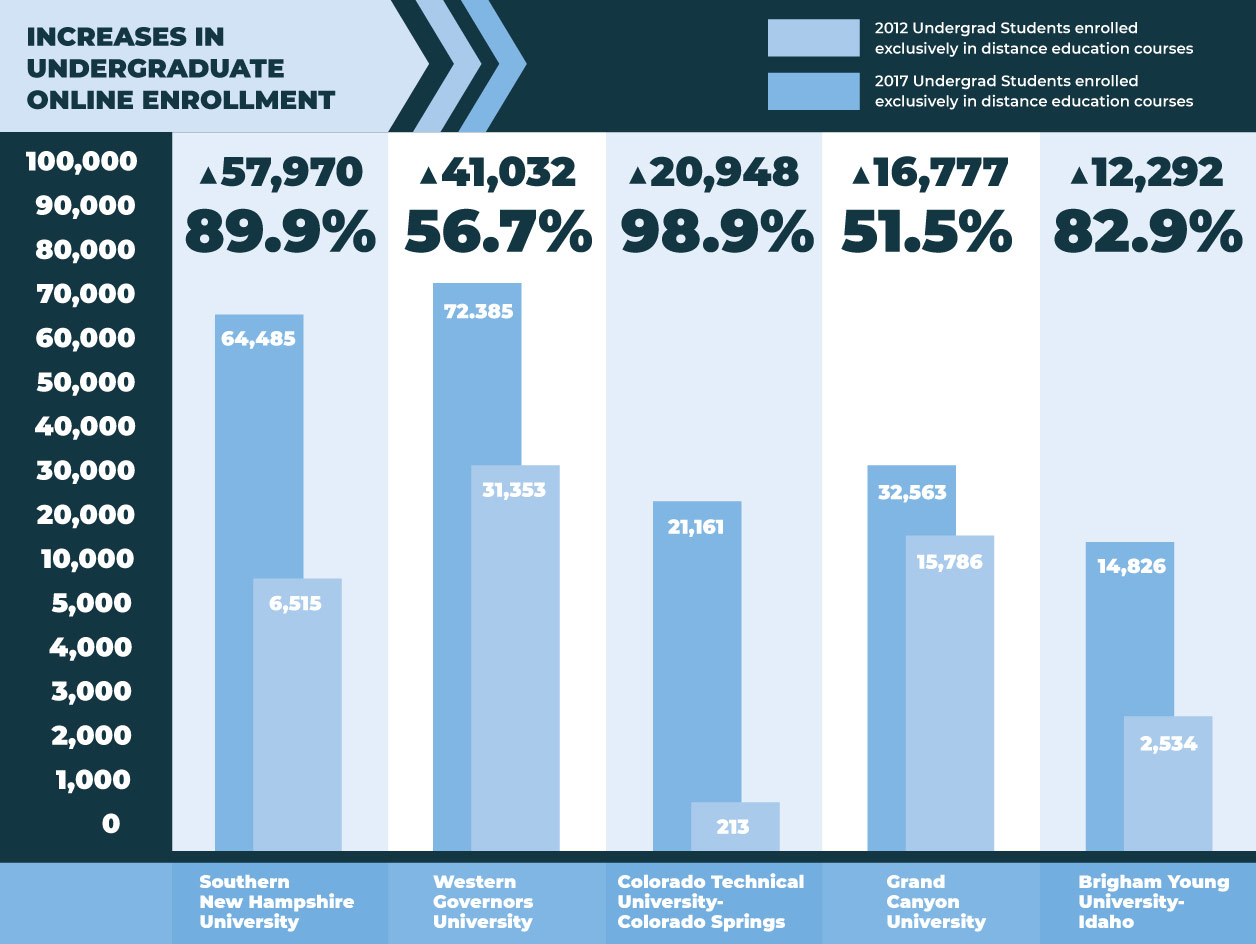 Fig. 2: Increases in undergraduate online enrollment at schools with substantial online enrollment.[/caption]
Fig. 2: Increases in undergraduate online enrollment at schools with substantial online enrollment.[/caption]
There has been an impressive percentage increase in flipping from campus to online for new online schools, such as the Ultimate Medical Academy-Clearwater, Horizon University, and Oregon Coast Community College. Ultimate Medical Academy-Clearwater and Averett University Altierus Career College-Tampa flipped entirely from on campus to online.
[caption id="attachment_50038" align="aligncenter" width="1599"]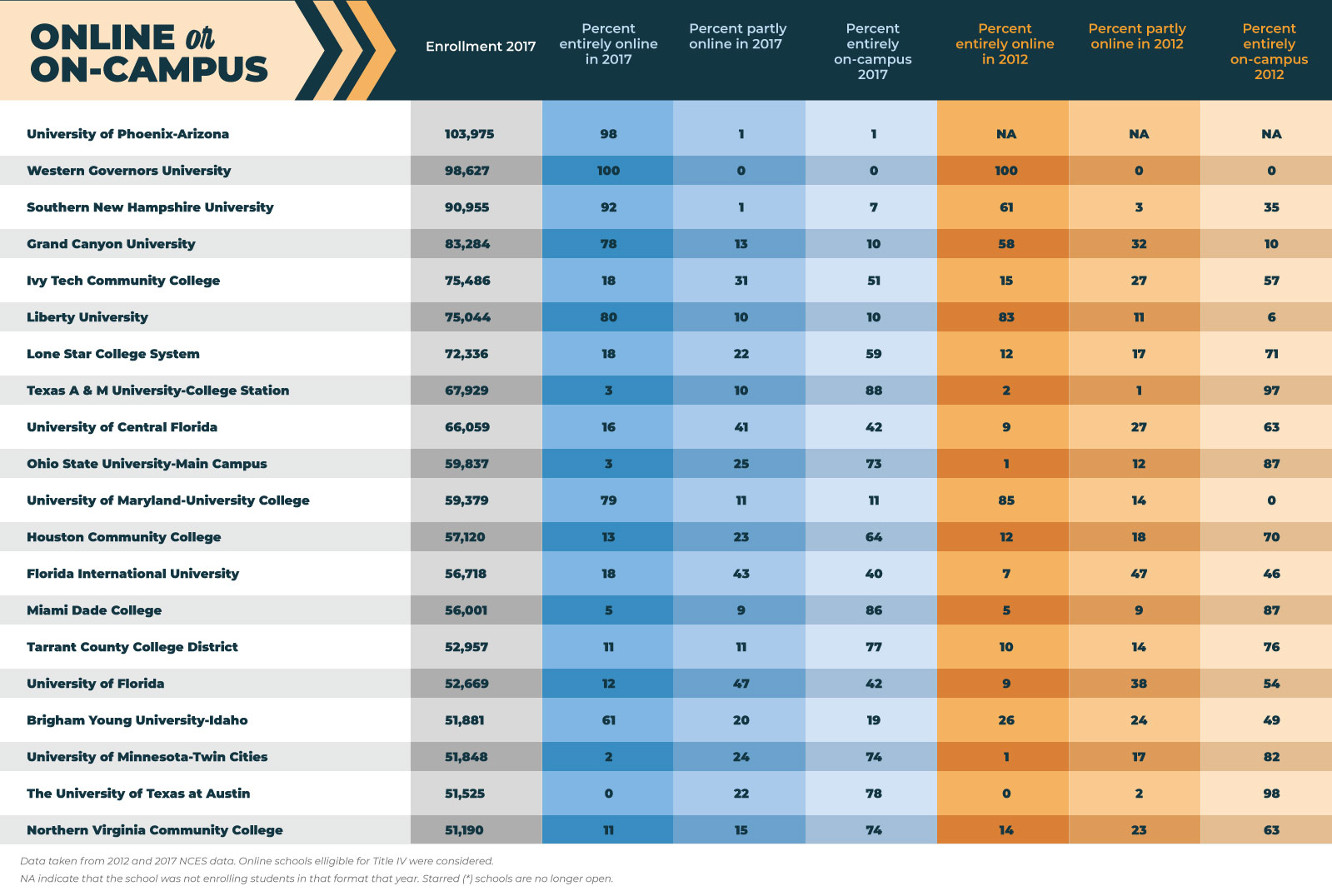 Fig. 3: Changes in online enrollment percentages from 2012 to 2017.[/caption]
Fig. 3: Changes in online enrollment percentages from 2012 to 2017.[/caption]
Some schools had large increases in one award level but decreases in another. For example, Northcentral University, National University, Ohio University-Main Campus, Central Michigan University, and Excelsior College had increases in online graduate enrollment, but decreases in undergraduate enrollment. University of Maryland-University College, Strayer University-Georgia, Bethel University, Strayer University-North Carolina, and Capella University experienced increases in undergraduate enrollment, but decreases in graduate enrollment.
[caption id="attachment_50037" align="aligncenter" width="1256"]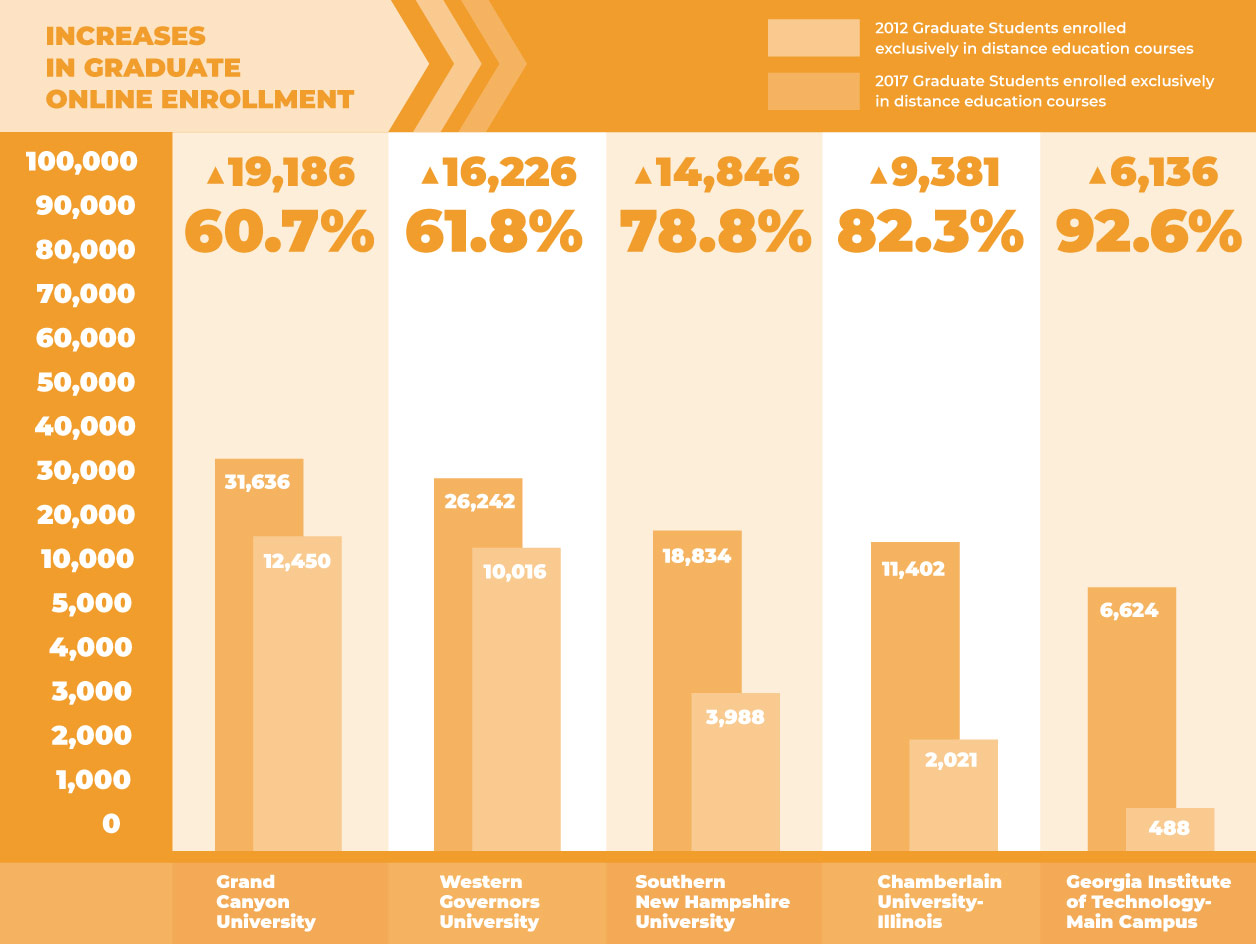 Fig. 4: Increases in graduate online enrollment at schools with substantial online enrollment.[/caption]
Fig. 4: Increases in graduate online enrollment at schools with substantial online enrollment.[/caption]
Almost 2,200 schools increased their online enrollment percentage, and fewer than 600 schools decreased their online enrollment percentage. The growing demand for online education is here to stay and is driving an ever improving, higher quality learning experience that, all in all, benefits the student.
Online education is becoming more collaborative and personalized. Higher education institutions are driven to compete by revamping the existing traditional pedagogy and utilizing the latest technologies, such as blended hybrid learning, game based learning, mobile-friendly learning, and microlearning.
Online education is now offering more customized and engaging multimedia content in a highly collaborative atmosphere where the student plays a more active role. These latest technologies allow educators to personally get to know each student better and evaluate the most effective and personalized learning techniques.
Who Takes Online Classes?
Online student profiles and overall student demographics are also changing. The majority of students enrolled in online education consider themselves “lifelong learners” and may not necessarily fall within the typical college age of 18 to 21 years old. In the future, the number of Millennials and Generation Z may become outnumbered by the growing number of “nontraditional lifelong learners.” The Lumina Foundation found that 38 percent of undergrads are older than 25 and typically are working while studying. These students are considered “career accelerators and career changers” who want to enter a new field, advance in a field, or upskill.
Overall, career and employment goals continue to be the top reasons for students to go back to school and pursue an online education. In order to better serve this changing student population, universities are collaborating with corporate business partners to create more in-demand skills and industry-tailored curricula.
Similarly, higher education institutions are offering nontraditional degrees, such as Massive Online Open Courses, specialized graduate certificates, digital badges, nanodegrees, and “stackable degrees” (courses which can be stacked into degrees). For the past 30 years, there has been a significant increase in online certifications. In addition, online higher education institutions like Independence University are offering high-touch, personal resources to support the online experience, such as hosting 28 open houses across the country as well as monthly check-in’s with personal faculty program advisor, student advisor, and career services advisors. The future of online education entails rethinking one’s career trajectory and celebrating the possibilities of a path in “lifelong learning.”
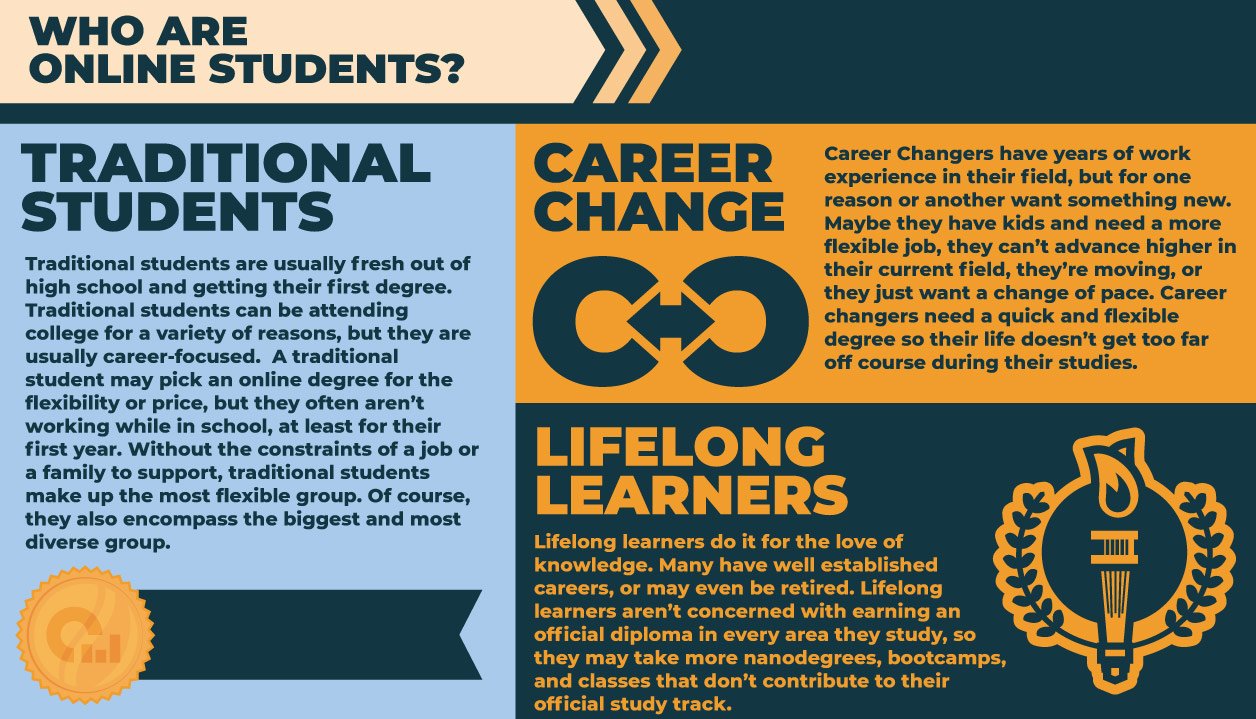
The growing demand for online education is contributed to the use of technology, improved industry-related curricula that fill the skills gap in the workforce, and a more collaborative, interactive, and personalized learning pedagogy.
Dr. Alan Hansen, Executive Director at Independence University in Salt Lake City in Utah, stated in an interview that, since 2005, there has been growing evidence proving that the “stigma” of an online education and the general public’s mindset are changing; barriers have disappeared, employers are hiring online graduates, and an online education is equal to or better than an education offered at a traditional university.
Hansen predicts online education will continue to grow annually. He attributes the growth in online education to a number of factors that are increasing the quality and value, such as ever-improving technology, curricula iterations, adaptive learning, synergy, shifting pay structures, MOOC collaboration, and various stackable degree options. He predicts that online education will increase during a future recession, but, nevertheless, the traditional universities that are serving the traditional student demographic “won’t go away.”
“The traditional universities that are serving the traditional student demographic ‘won’t go away.'”
Online higher education institutions have responded to the skills gap with a renewed sense of commitment and accountability, striving to instill the necessary critical thinking, problem solving, and creative skills to address a new set of problems in a rapidly changing and increasingly automated age.

Part 2: Popular Online Degrees
by Catherine Alter

Distance education (DE) is not new. For well over 100 years, DE has made all levels of education accessible to students who could not afford or physically attend a brick and mortar school. My own father, born in 1908 on a dirt farm in the Missouri Ozarks 25 miles from the nearest school, was home-schooled through 12th grade by his mother using correspondence courses. Without DE, he would not have had the opportunity to enter university and eventually become a successful economist and university professor.
DE has changed dramatically over the last millennium, progressing from my dad’s paper and pencil courses to radio, other forms of audio broadcast, television, and most recently to web-based technologies. As DE technologies improved, the number and breadth of educational offerings grew exponentially because DE educators were able to adapt rapidly to the changing needs of students and employers. DE has transformed the lives of untold numbers of people who yearned for an education and a better life but lacked opportunity.

This section focuses on one component of today’s DE: namely, online-only universities. It will primarily examine master’s degree programs as an example of the larger trends. The data for this analysis was downloaded from the National Center for Educational Statistics for the academic year of 2016-2017.
This section also summarizes some thinking about the connection between popularity and excellence in DE programs by asking professionals in the field whether programs with the highest enrollments are necessarily those of the highest quality. To obtain their opinions, interviews were conducted with several leaders in the field and then the results summarized.
Popularity of Online-Only Master’s Programs
During the academic year of 2016-2017, there were 40 online-only institutions in the US. Fig. 5 lists the largest 10, their total enrollment, and how many students they had in each of the five most popular majors.
[caption id="attachment_50041" align="aligncenter" width="1435"]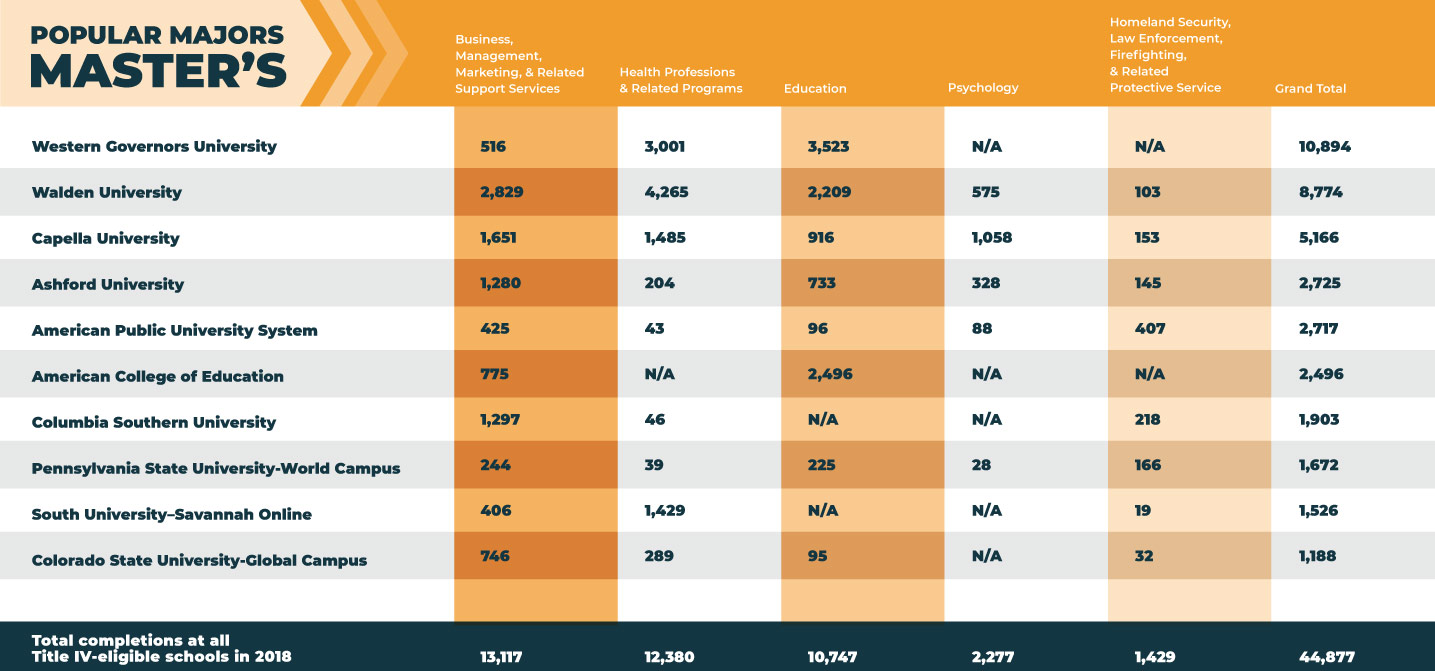 Fig. 5: Popular master’s degrees at the largest online-only institutions.[/caption]
Fig. 5: Popular master’s degrees at the largest online-only institutions.[/caption]
In 2017, these 40 universities and colleges had 44,877 total graduates over 24 departments. The top ten, with enrollments of 39,061, accounted for 87.04 percent of the total; the remaining 25 universities account for only 12.96 percent of all online-only schools’ master’s degree graduates.
If we assume graduate program popularity is accurately measured by enrollment size, then Fig. 5 shows that three of these institutions were clearly in a league of their own. They were Western Governors University (10,894 enrollments), Walden University (8,774 enrollments), and Capella University (5,166 enrollments). Together, these three institutions accounted for 55.34 percent of all US, online-only school’s master’s degree enrollments.
A similar picture emerges when the focus is on degree programs. Again, Fig 5 only shows the ten largest online-only schools, and how many students they had in the five most popular master’s degree majors.
Fig. 6 shows these statistics for the ten largest schools by bachelor’s degree graduates.
[caption id="attachment_50040" align="aligncenter" width="1435"]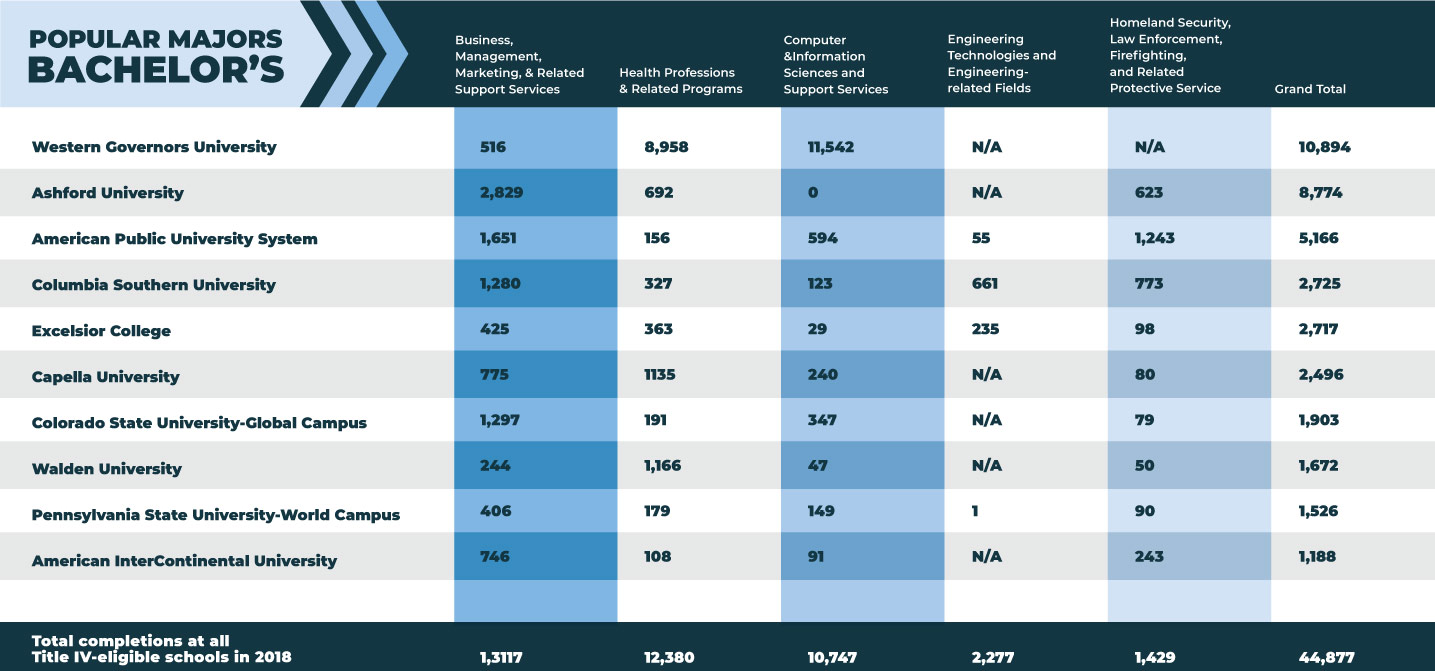 Fig. 6: Popular bachelor’s degrees at the largest online-only institutions.[/caption]
Fig. 6: Popular bachelor’s degrees at the largest online-only institutions.[/caption]
For master’s degrees, Business, Management, Marketing & Support Services was the largest program in terms of both the number of online-only schools that offered it (30) but also in total enrollment (13,117). By itself, business programs accounted for 29.22 percent of all enrollments. This reflects the popularity of online MBA programs. Two programs followed close behind: Health Professions (12,380 enrollments) and Education (10,747).
One note of interest: Eight degree programs were offered by only one university, and a few are relatively large. For example, American Public University System offered the only History program at an online-only school, and it had 210 graduates. Likewise, Pennsylvania State University-World Campus offered the only Engineering program and had 179 graduates.
Quality of Online-Only Master’s Programs
Does popularity equal excellence? Probably not, said the professors interviewed for this article. They all agreed that DE is significantly different than on campus courses with different teacher-student dynamics. Online courses should also have curriculum designed especially for DE delivery, not just re-packaged from classroom designed curriculum.
Additionally, professionals agreed that the best online courses have common attributes that contribute to excellence and can be used as a guide for choosing a quality online-only master’s degree program. Excellent programs are those that: (1) are accredited, (2) provide sufficient opportunity for teacher/student interaction, dialogue and coaching, (3) include thought provoking asynchronous learning materials, (4) avoid long video recorded lectures, (5) have weekly live on-screen class time, and, (6) convey a sense of community.
Above all, because there is distance between teacher and students, and between students themselves, DE courses must create a feeling of community among participates that breaks down the isolation inherent in the distance. Students should not be alone in their educational experience; they must feel companionship with their teacher and peers and a sense that we’re all in this together. Finally, excellent online-only courses incorporate frequent and continuous assessment and refinement that rely on a range of student feedback opportunities. In the end, an excellent on-line only course is one in which students can concentrate on the content because the technology has become transparent.

Part 3: Perceptions of Online Education
by Shannon Serpette

Online degrees are growing more popular, but they remain polarizing. Their proponents point to the convenience of online degrees for busy students juggling jobs and families. But their detractors question whether online degrees fully prepare students and if they are as thorough as on-campus education.
Students looking at online education might wonder if the teaching style will work for them, if the degree will look good on a resume, and if their program is legitimate.
A Closer Look at Online Degrees
Those who have never taken online courses or pursued degrees partially or fully online may not understand them. They might wonder what kind of assignments online students receive and how tests work. That can lead those people to form an opinion that on-campus degrees are superior, which can be frustrating for people who complete legitimate online degrees.
Some of that acrimony stems from the early days of online courses, when educators were still getting a feel for how to best construct these classes to reach their maximum potential. That led to some poor experiences for those who took online classes at the beginning of the movement.

Meredith Crawley, a physical education teacher, opted to take an online oceanography course when she was pursuing her associate degree more than ten years ago. She wasn’t a fan of the experience.
“I missed the personal interaction between the professor and me,” she said. “I missed the classroom setting.”
While some people view online courses as blow-off classes, Crawley felt it was the opposite.
“I felt it was a tougher class. You couldn’t talk face-to-face with your professor,” she said.
The course mostly comprised a lot of reading and answering questions. There were a couple of online quizzes to take as well, but there were no online lectures or videos to watch, making the course a dull one.
“I got nothing out of it. If it were my major, I would have been very disappointed,” Crawley said.
Since she took the course at a time when colleges were still ironing out the online course process, Crawley said there were no security features to ensure she was the one doing the work.
“I missed the personal interaction between the professor and me.”
Even though she wasn’t a fan of the experience, she understands the appeal and value of online courses and degrees. As a mom now, she admitted she wouldn’t be able to commit to a brick-and-mortar university at this point in her life if she decided to obtain another degree. She would choose to try online courses again, although she would want to have one that factored in more interaction with the professor.
“For people with children, it’s easier,” she said.

One way online courses have changed since Crawley’s experience is that they incorporate more video now. Video breaks up the monotony of the reading material-only experience. Out of a poll of more than 1,000 educators and students, 66 percent said videos are used in the online courses they take or teach now.
Although Crawley’s experience wasn’t ideal for her, the majority of online students in one study—85percent—are happy with their online experience, calling it as good as or superior to their on-campus courses.
Employer Perception of Online Degrees
As the online degree experience has evolved since it was first introduced, so has the attitude toward these degrees from employers.
Jay McCracken, a former mayor of a small Illinois town, is a school superintendent who has been in the field of education for 42 years. He has worked as an elementary school teacher and administrator, having spent the last ten years as superintendent at several school districts.
He admits his opinion of online degrees has changed dramatically over the years—he wasn’t a fan of them when they first started being offered by colleges. But his opinion has changed as they have become more mainstream and implemented security measures.
“As long as the interview goes well, there are no worries whatsoever about the candidate having an online degree. I have seen amazingly qualified people with online degrees.”
He sees online degrees frequently when hiring candidates for his school district. When teachers apply for positions at his school, he said many of those with master’s degrees obtained them online.

McCracken said a candidate having an online degree instead of an on-campus degree does not influence his hiring decision at all.
“They are so prevalent today. As long as the interview goes well, there are no worries whatsoever about the candidate having an online degree,” he said. “I have seen amazingly qualified people with online degrees.”
Public high schools have embraced online courses in recent years, so much so that many of them now offer them for their high school students.
“In our high school, we offer online courses,” McCracken said. “We recognize they are very valuable.”
Although online degrees can be a great option for some students, he said students need to weigh whether an online degree is best for them.
“For some individuals, it doesn’t work,” he said.
Those who do well with online courses tend to be those who are self-motivated and driven.
“It also depends upon what kind of learner they are,” he said, adding that some need the in-classroom attention they get at brick-and-mortar schools.
The Limitations of Online Degrees
Distance education’s defining characteristic, distance, can also be an obstacle. Students often miss out on hands-on experience.
Summer Traver, an elementary school teacher with 23 years of experience, said that when it comes to teaching online degrees can’t substitute for the in-classroom experience. Since so much of teaching is spent connecting with children, dealing with parents, and working with other teachers and administrators, Traver said students seeking their degrees benefit greatly from being on-campus and working with people with different personality types.
“Teachers are getting their degrees online and they aren’t getting the experience they would in a classroom setting,” she said.

Traver said she notices those with on-campus degrees are more prepared for all aspects of the job than those who have online degrees.
“You can tell the difference in classroom management skills,” she said.
Hands-on experience may be one of the trade-offs those who choose to learn online may make for the convenience and potential cost saving of online learning. Each teaching method comes with its own set of pros and cons, and ultimately, it’s up to the student to decide which method works best for them and their lifestyle.
“Teachers are getting their degrees online and they aren’t getting the experience they would in a classroom setting.”
How Colleges Assure the Quality of Online Degrees
Colleges have struggled to fight the perception that online classes are blow-off courses. Part of the way they have improved the reputation of online degrees is through implementing security measures and putting safeguards in place.
While it was common in the early years to take an online course without any safeguards to determine a student was truly doing the work, it’s rare to find that now, especially with an accredited university.
Colleges expect students taking courses online to adhere to the same honor system as their in-class students do. But that doesn’t mean they are willing to take their word for it. Just as a teacher monitors test-taking in the classroom to ensure no one is cheating, there are ways to do that online as well.
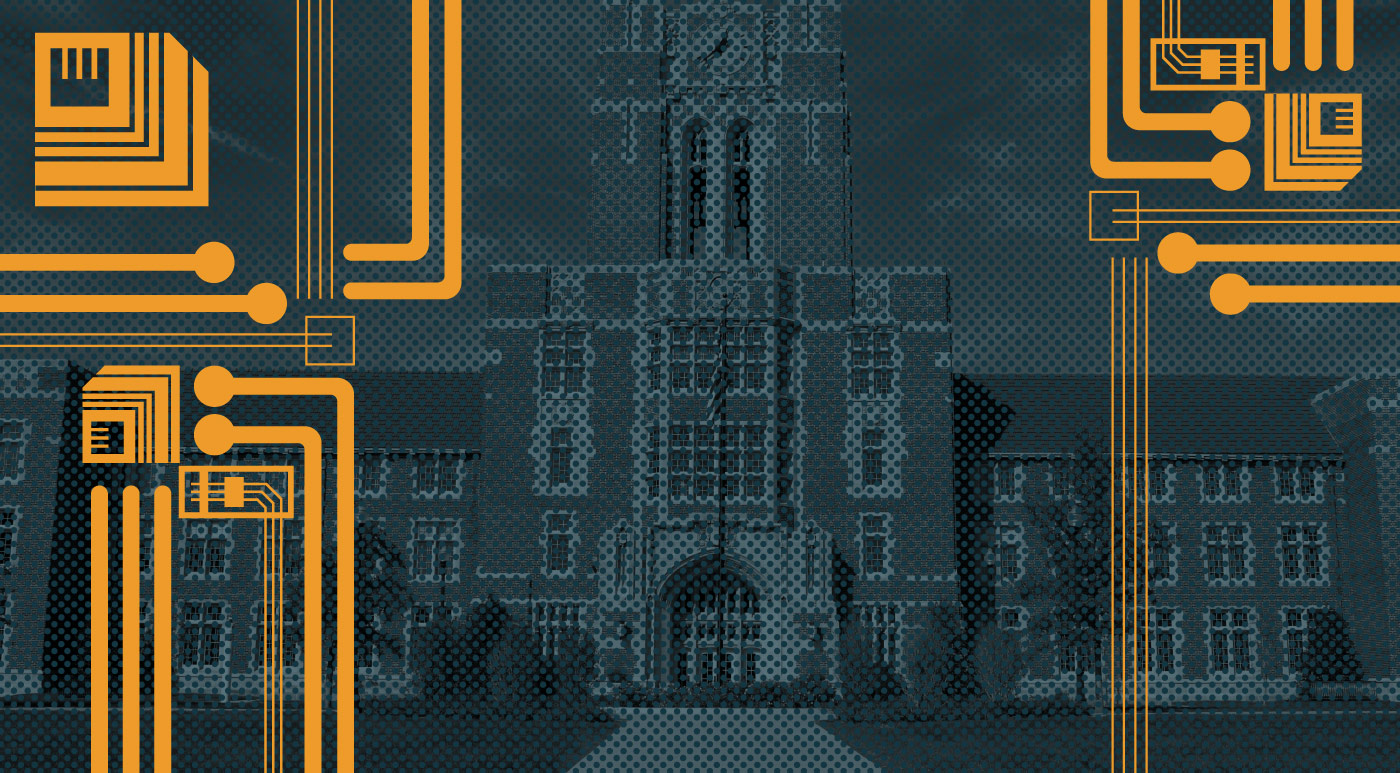
One way is having online exams monitored by people watching through webcams. Another way is monitoring the test through a computer – it can track the user to see if they are looking at the screen or elsewhere, which might be a red flag that the student is cheating. Some other methods to cut back on online cheating include lockdown browsers, IP tracking, and software that identifies changes in typing speeds.
Since universities use the best technology available to them to cut down on online cheating attempts, some experts say it is more difficult to cheat online than it is in a classroom setting.
Making It Count
Online learning has made great strides in recent years, both in terms of students satisfaction and employer perception. As online degrees have become more common, security measures have become more sophisticated to ensure quality control.
All of these improvements have led to a better experience for students and greater employer confidence when it comes to hiring people with online degrees.

For all their differences, one similarity that online and on-campus degrees share is that students will only get out of their education as much as they are willing to put into it. If they are prepared to give it their all, whether their learning platform is online or face-to-face, the end result will be much better and more satisfying for them.
As with traditional degrees, the key to getting the most out of an online degree is for students to give it their best effort.
Downloadable Data Sources:
Online Enrollment, Undergrad vs Graduate (.xlsx)
Percentage of Students Enrolled Online by University (.xlsx)


